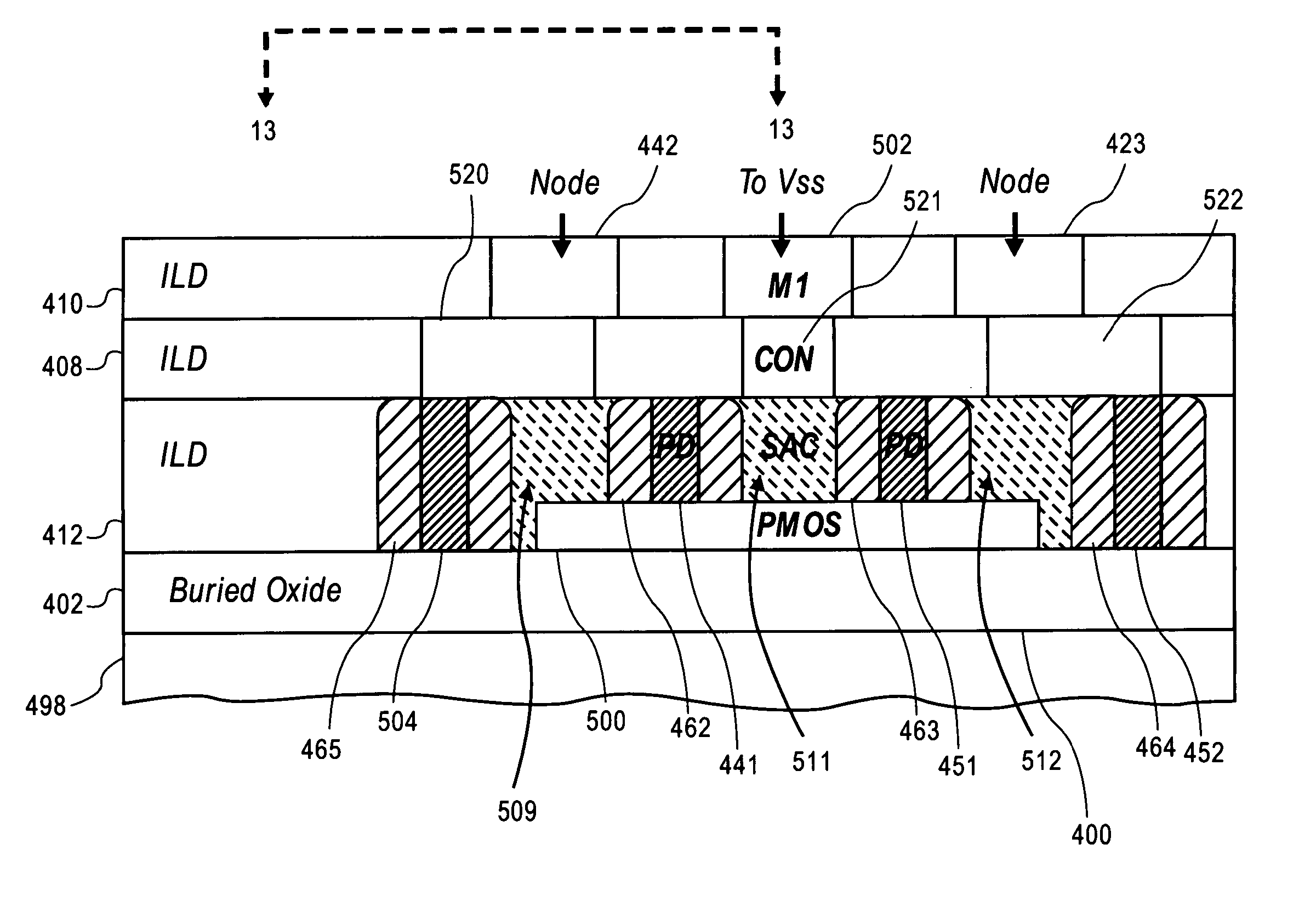Self-aligned contacts for transistors
a technology of self-aligning contacts and transistors, which is applied in the direction of transistors, semiconductor devices, electrical equipment, etc., can solve the problems of low self-alignment, low self-alignment, and high external electrical resistance (“rext”),
- Summary
- Abstract
- Description
- Claims
- Application Information
AI Technical Summary
Problems solved by technology
Method used
Image
Examples
Embodiment Construction
[0036] Embodiments of self-aligned contacts are described as well as methods for fabricating such contacts.
[0037] As described in more detail below, a self-aligned contact (“SAC”) brings the contact physically all the way to a spacer associated with a gate of a transistor. This arrangement can help to minimize electrical external resistance (“Rext”) associated with a thin and long diffusion body of the transistor. The minimization (or elimination) of Rext can also minimize (or eliminate) variations of Rext. Variations in Rext can cause transistor mismatches.
[0038] For one embodiment, superadjacent contacts reside in a layer above the self-aligned contacts and provide respective electrical connections to the self-aligned contacts. The self-aligned contacts have a relatively wide top surface layer and the superadjacent contacts have smaller horizontal cross sections than the respective self-aligned contacts. This means that the superadjacent contacts do not have to be precisely alig...
PUM
 Login to View More
Login to View More Abstract
Description
Claims
Application Information
 Login to View More
Login to View More - R&D
- Intellectual Property
- Life Sciences
- Materials
- Tech Scout
- Unparalleled Data Quality
- Higher Quality Content
- 60% Fewer Hallucinations
Browse by: Latest US Patents, China's latest patents, Technical Efficacy Thesaurus, Application Domain, Technology Topic, Popular Technical Reports.
© 2025 PatSnap. All rights reserved.Legal|Privacy policy|Modern Slavery Act Transparency Statement|Sitemap|About US| Contact US: help@patsnap.com



